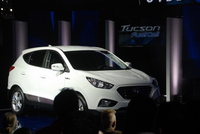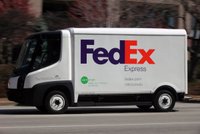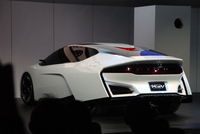Past Experience Doesn’t Make One Optimistic, But Times Are Changing
Plug-in electric cars had record sales this past year, jumping 84 percent from the previous year’s sales and hitting almost 100,000 in sales. They’re selling better than hybrids did after their introduction more than a decade ago. Optimists expect the trajectory to continue; pessimists point to the waning of incentives from government to offset the increased prices of EVs and the lack of automakers ability to continue the fire-sale tactics that dominated the 2013 market.

As is always the case at the end of one calendar year and the beginning of another, predictions for the future of new technologies abound. Some representative headlines:
- Nissan announced it will have autonomous cars for sale in 2020.
- Eight governors pledged to get 3.3 million more zero emission cars on the roads by 2025.
- Three quarters of vehicles sold worldwide by 2035 will have autonomous features.
- By 2022 there will be nearly 1.9 million natural gas-powered trucks and 1.9 million natural gas buses globally.
Presidential Predictions
But experience tells you to step back and take a breath when you read this kind of prognostication. President Obama in his 2011 State of the Union address called for the country to put a cumulative one million electric vehicles on the road by 2015. In that total he included range-extended versions such as the Chevy Volt. Of course, it was not to be since that total was built on the expectation of GM selling 120,000 Volts a year in 2012 and 2013 (as well as 50,000 Leafs and 10,000 Ford Focus Electrics in 2013). Not to mention the expectation that the Fisker Nina would be produced and sold along with the Think City, Fisker Karma and Ford Transit EV. Of course it didn’t anticipate all of the plug-in cars that have some on the market in the past two years, but the cumulative numbers will be nowhere near the expected million.
It reminds me of the Yogi Berra quote: “The future ain’t what it used to be.”
Ford On Fuel Cells

I found an interesting story and quote from less than 13 years ago. Bill Ford, then chairman (now executive chairman) of Ford Motor Company. “I believe fuel cells could end the 100-year reign of the internal combustion engine.” He then predicted that Ford would offer fuel-cell-powered Focus by 2004.
Well, here we are a decade later and its Hyundai, not Ford, who is putting a fuel cell vehicle on sale (the Tucson FCEV goes on sale this spring at California dealerships). Of course Honda, Mercedes and GM have put limited numbers of fuel cell cars in consumers’ hands, but this is the start of the retailing of this technology.
FedEx’s Pledge & Reality
Another illustrative story comes from FedEx, a leader in adopting new technology. In 2004 they joined with the NGO Environmental Defense and Eaton Corporation pledging to replace its 30,000 medium-duty trucks with hybrid trucks over the coming years to reduce both pollution and greenhouse gases. It seemed like a win-win with environmental advances also paying off in a better bottom line for FedEx because of increased efficiencies.

Well, again, here we are a decade later and FedEx has deployed 408 electric and hybrid (either gasoline-electric or diesel-electric) trucks. The good news is FedEx’s leadership has led to another 1,400 hybrid delivery trucks hitting the roads with other companies. As FedEx acknowledged, government incentives will continue to play a critical role in rollout of advanced technology vehicles.
These Things Take Time
These things do take time. Wishful thinking won’t get us there. Government money can help, but ultimately it can only play a minor role if the goal is the transformation of a fleet. Cars and trucks that are better alternatives to gasoline ones in every way will be the only way to make it happen. That’s the way gasoline won out over electricity and steam 100 years ago. That’s why diesel won out over gasoline in Europe 15 years ago. That’s why the Toyota Prius is the 10th best-selling car of 2013.
In spite of all of the predictions, 2014 could be one of those years where we see some real change. We at Clean Fleet Report will be here to chronicle it.

Story & Photos by Michael Coates
Posted January 3, 2014
Other related stories you might enjoy:
Top 10 Best-Selling High-MPG Cars of 2013
Hydrogen Fuel Cell Cars Go On Sale in 2014
Cars and Technology of the Future

5 thoughts on “How Long Will It Take to Convert the U.S. Fleet to Electric Cars?”